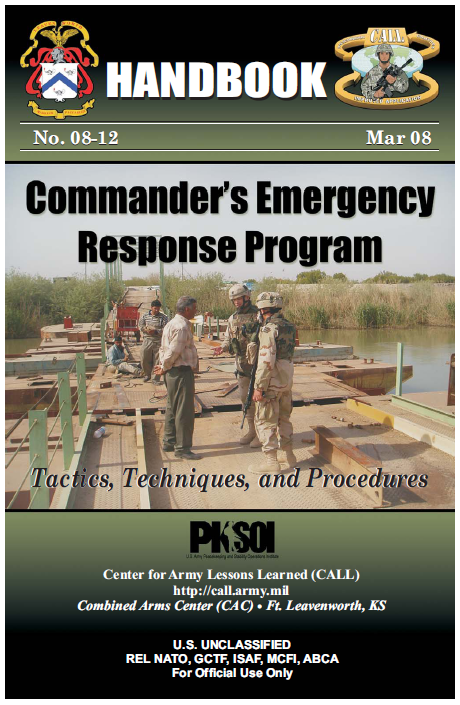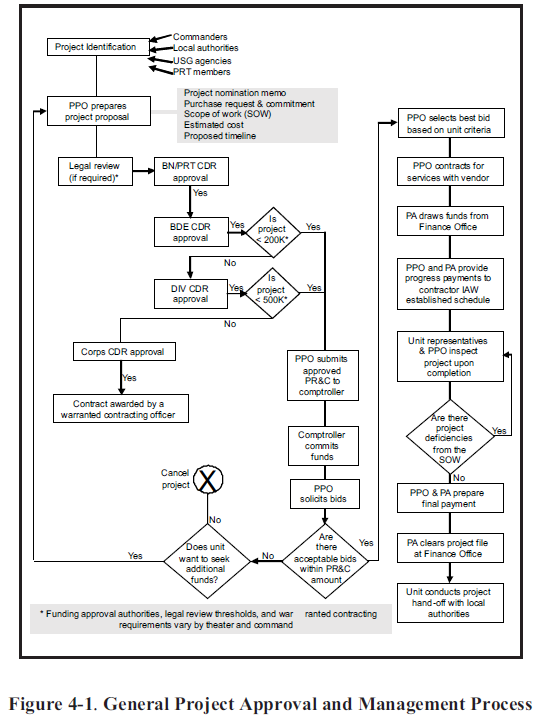 Center for Army Lessons Learned (CALL)
Center for Army Lessons Learned (CALL)
- 46 pages
- For Official Use Only
- REL NATO, GCTF, ISAF, MCFI, ABCA
- March 2008
The Commander’s Emergency Response Program (CERP) has become a critical capability in the commander’s toolbox for conducting stability operations. CERP funds provide tactical commanders a means to conduct multiple stability tasks that have traditionally been performed by U.S., foreign, or indigenous professional civilian personnel or agencies. These tasks include but are not limited to the reconstruction of infrastructure, support to governance, restoration of public services, and support to economic development. This handbook focuses on basic tactics, techniques, and procedures (TTP) for the application of the CERP. Its intended audience is the brigade, battalion, and provincial reconstruction team commander and staff. This handbook is based on lessons learned and best practices in use today in both Iraq and Afghanistan and identifies the training, planning, and operational procedures required to fund projects and services the commander requires during the conduct of stability operations. This handbook also provides the TTP to guide the commander through the regulatory and administrative requirements of the CERP.
Key Lessons
• The brigade/brigade combat team commander is responsible for the overall implementation of the CERP within the brigade’s area of responsibility (AOR), and the battalion/task force (TF) commander is responsible for the overall implementation of the CERP within the battalion/TF AOR.
• The civil affairs officer and the S-9 staff are key planners for the execution of the unit’s CERP.
• Commanders should design and select only those projects and services that will have a lasting effect on the local population.
• Commanders should request or conduct for themselves an assessment of local conditions before investing financial resources into any potential relief or reconstruction program.
• Commanders and staffs should assess potential unintended results of their unit’s CERP.…

